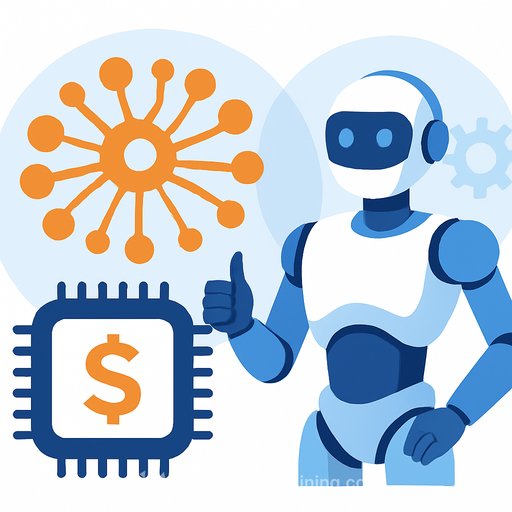Tether's Potential $1.15B Bet on Neura: What Finance Teams Should Watch
Tether is in talks to invest roughly $1.15 billion in German robotics startup Neura, a deal that would value the company between $9.3 billion and $11.6 billion. The discussions were reported by the Financial Times and have not been confirmed by Tether or Neura. Treat this as exploratory, but meaningful.
If completed, the investment would extend Tether's push into artificial intelligence and automation, alongside stakes across Bitcoin mining, energy, finance and sports. The company already backs around 140 firms, signaling a broader capital allocation strategy beyond stablecoins.
Why this matters for capital allocation
Tether reported more than $10 billion in net profit through the first three quarters of 2025, per its Oct. 31 Q3 attestation, after generating $13.4 billion in 2024. Most earnings come from interest on U.S. Treasury bills that back USDT, which sits near a $184 billion market cap.
The company has been deploying cash into new verticals: about $1.5 billion into commodity-trade lending last week, plus reported exploration of a $20 billion raise that could imply a $500 billion valuation. A Neura position would tilt more capital toward equity exposure in automation and AI, changing Tether's risk and return profile beyond short-duration fixed income.
What Neura brings
Neura builds robots to assist humans and AI systems across manufacturing, business operations and even household tasks. The plan: produce 5 million robots by 2030 to execute automation at scale. If achieved, that footprint could intersect with supply chains, energy demand and logistics-areas where Tether is already allocating capital.
The investor lens: key points and potential outcomes
- Valuation and dilution: A $9.3-$11.6 billion mark suggests meaningful pricing power for Neura. Watch whether the deal is primary (growth capital) or secondary (liquidity for existing holders), and the governance that comes with it.
- Unit economics and scale: A 5 million unit target by 2030 requires clear cost curves, supplier agreements, and service/warranty assumptions. Hardware gross margins and recurring software/service revenue will determine quality of earnings.
- Funding mix and risk: Equity in robotics carries technology, supply chain and adoption risk that doesn't correlate with T-bill yields. This changes Tether's portfolio beta and liquidity profile.
- Synergies: Automation intersects with Tether's exposure to energy, commodities and mining. Robotics that improve throughput or lower opex could create indirect value across that footprint.
- Regulatory overhang: Any expansion by a major stablecoin issuer draws scrutiny. Expect questions on reserves, related-party exposure and concentration risk as capital moves further into operating assets.
- Exit paths: IPO, strategic acquisition, or long-term cash generation. Pay attention to board rights, liquidation preferences, and performance milestones tied to production or ARR.
What finance teams should monitor
- Deal confirmation and terms: Size, valuation mechanics, security type (preferred vs. common), and any ratchets or earn-outs.
- Governance: Board seat(s), information rights, and protective provisions that constrain future financing.
- Capital intensity: Capex plans, factory buildouts, supplier prepayments, and working capital cycles as production ramps.
- Revenue mix: Hardware vs. software vs. service; maintenance contracts and fleet management recurring revenue.
- Risk management: Impact on Tether's liquidity profile if market rates fall, plus concentration across AI/automation, commodities and energy.
- Regulatory updates: Any new disclosures tied to attestations or reserve composition that reflect this shift.
Context and references
For ongoing disclosures, see Tether's transparency and attestation updates: Tether Transparency. These filings provide the baseline for earnings, reserve composition and deployment activity.
If you're evaluating AI rollouts inside finance functions, this curated set of tools is a practical starting point: AI tools for finance.
Bottom line
This proposed deal signals a larger shift: Tether converting yield-driven cash flows into higher-beta operating bets in automation and AI. If Neura executes on production and services, the upside could be significant-alongside higher execution and liquidity risk that finance teams will want to price in from day one.
Your membership also unlocks:






